-
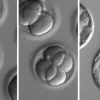 +10 +1
+10 +1Human embryos edited to stop disease
Scientists have, for the first time, successfully freed embryos of a piece of faulty DNA that causes deadly heart disease to run in families. It potentially opens the door to preventing 10,000 disorders that are passed down the generations. The US and South Korean team allowed the embryos to develop for five days before stopping the experiment.
-
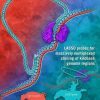 +17 +1
+17 +1Scientists Can Now Clone Thousands of Genes in a Single Reaction
Things are about to speed up dramatically in genetic research, with scientists developing a new technique that can clone thousands of genes in a single reaction. The new technology, called a LASSO probe, could be used to create libraries of proteins from DNA samples, speeding up the search for new drugs by replacing the tedious methods of gene cloning currently used.
-
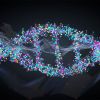 +18 +1
+18 +1With powerful new technique, scientists can clone thousands of genes at once
Scientists at Johns Hopkins, Rutgers, the University of Trento in Italy, and Harvard Medical School report they have developed a new molecular technique that can be used to isolate thousands of long DNA sequences at the same time, more than ever before possible. According to the researchers, the new technology—known as LASSO cloning—speeds up the creation of proteins...
-
 +15 +1
+15 +1Dividing Droplets Could Explain Life’s Origin
Researchers have discovered that simple “chemically active” droplets grow to the size of cells and spontaneously divide, suggesting they might have evolved into the first living cells. By Natalie Wolchover.
-
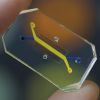 +33 +1
+33 +1Human Organs-on-Chips - Microchips lined by living human cells that could revolutionize drug development
Clinical studies take years to complete and testing a single compound can cost more than $2 billion. Meanwhile, innumerable animal lives are lost, and the process often fails to predict human responses because traditional animal models often do not accurately mimic human pathophysiology. For these reasons, there is a broad need for alternative ways to model human diseases in vitro in order to accelerate the development of new drugs and advance personalized medicine.
-
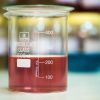 +6 +1
+6 +1Synthetic biology startup Lygos raises $13 million from OS Fund and IA Ventures to make cleaner chemicals
Lygos uses microbugs to convert low-cost sugar into specialty chemicals used in manufacturing, and is now releasing a technique to make malic acid, an ingredient needed in the mass production of electronics. To do so, the company announced today it has raised $13 million in Series A funding led by OS Fund and IA Ventures, with participation from First Round Capital, Y Combinator’s Continuity Fund, Fifty Years, Vast Ventures and various angel investors.
-
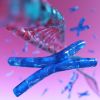 +5 +1
+5 +1China First to Edit Human DNA using CRISPR-Cas9
CRISPR-Cas9 is a gene editing technique that is faster, cheaper and more accurate than previous methods. With CRISPR-Cas9, geneticists and medical researchers can remove, add, or alter sections of the DNA sequence. Until now, the technique has not been used in conjunction with human medical treatment. China has changed that.
-
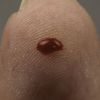 +32 +1
+32 +1Genalyte raises $36 million from Khosla for its one-drop blood test
Theranos competitor Genalyte just announced it has raised an equity round of $36 million in funding led by Khosla Ventures and Redmile Group.
-
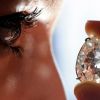 +31 +1
+31 +1Eternal Storage: Scientists Have Found a Way to Store Data Within Diamonds
Though it might be the first place you think to look, jewelry is not the only place where diamonds can be found. They are used in industrial drills and in medical equipment, and soon diamonds could be found inside computers as well. Siddharth Dhomkar and his team of scientists from the City College of New York have found a way to store data inside artificially grown diamonds using small defects inside the gems. To do this, they targeted diamonds whose crystalline structures had small gaps called nitrogen vacancy centers where carbon atoms should be. The gaps are so named because nitrogen atoms are located around them.
-
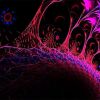 +24 +1
+24 +1Scientists Have Identified the Mechanism That Decides Between Cell Death and Genome Repair
The DNA double helix’s sequence is programmed with the genetic information of every cell. When a double DNA strand breaks, it poses a threat to the cells and, if the break is not correctly repaired, it can lead to cancer. Double strand breaks can be caused by exposure to radiation. When a cell is damaged in this way, it has to decide whether the break can be fixed, or whether it should be removed before it causes cancer. If the decision is made for removal, the cell is killed off by a cellular suicide program called “apoptosis”.
-
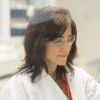 +18 +1
+18 +1With hundreds of millions raised from investors, a promising gene-editing company now has to prove its worth
Huddled with Wall Street investment bankers outside a hotel ballroom in downtown New York last January, Katrine Bosley was getting some sobering news. The stock market, falling since early December, was continuing to dive, with her industry, biotechnology, especially hard hit. The previous year had been the worst for new stock offerings in the history of the tech-heavy Nasdaq, and now Bosley had to persuade the roomful of investors lunching on the other side of the wall that her company, Editas Medicine, could break the trend.
-
 +35 +1
+35 +1Evolution may have moved at a furious pace on a much warmer Earth
Early life forms on Earth are likely to have mutated and evolved at much higher rates than they do today, suggests a new analysis from researchers at the University of North Carolina. In a study published this week in the Proceedings of the National Academy of Sciences, Richard Wolfenden, PhD, and his colleagues found that the rate of a certain chemical change in DNA - a key driver of organisms' spontaneous mutation rates and thus of evolution's pace—increases extremely rapidly with temperature.
-
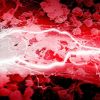 +19 +1
+19 +1Paper-Based Microbial Fuel Cell Operates without External Power
The paper-based MFC runs for five consecutive days and shows the production of electrical current as a result of biofilm formation on the anode. The system produces 1.3 μW of power and 52.25 μA of current yielding a power density of around 25 W/m3 for the experiment. The results show that the paper-based microbial fuel cells can create power in an environmentally friendly mode without the use of any external power sources. Nastaran Hashemi, Assistant Professor of Mechanical Engineering and the senior author of the paper...
-
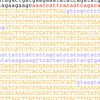 +8 +1
+8 +1American Scientists Want to Manufacture Synthetic Human Genomes
The ‘Human Genome Project—Write’ has drawn criticism because it could one day lead to children without biological parents.
-
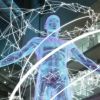 +20 +1
+20 +1Gene editing technique could transform future
CRISPR - get to know this acronym. It's good to know the name of something that could change your future. Pronounced "crisper", it is a biological system for altering DNA. Known as gene editing, this technology has the potential to change the lives of everyone and everything on the planet. A bold statement but that is the considered view of many of the world's leading geneticists and biochemists I've spoken to in recent months when working on my latest Panorama - Medicine's Big Breakthrough: Editing Your Genes.
-
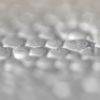 +41 +1
+41 +1Why Is Styrofoam Still a Thing?
It might not have the sexiest name, but expanded polystyrene is truly a wonder material. Widely—and incorrectly—known by the trademarked name Styrofoam™, this lightweight substance is crafted from petroleum-based polystyrene beads, which are stretched out during an intricate steaming and moulding process. The resulting product is 98 percent air, extraordinarily cheap to manufacture, and has widespread...
-
 +26 +1
+26 +1How Venom Kills...
Venom... the word sends chills up your spine at the mere mention of it. And with good reason. Its aim is to incapacitate its victims and boy does it work a treat. What's really interesting is that not all venoms are equal and not all work the same way. They're as diverse as the animals that deliver it. From clotting blood, causing paralysis and destroying living cells. It's a fascinating world that...
-
 +20 +1
+20 +1Migraines triggered by protein deep in the brain
A peptide that over-excites neurons controlling facial feeling is to blame for migraines – so drugs that constrict blood vessels won't work.
-
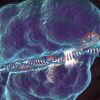 +22 +1
+22 +1Should Bioethicists “Get Out Of The Way” Of CRISPR Research?
The newly popular enzyme CRISPR-Cas9 has lots of impressive possible applications. Inevitably, it will be used to edit human DNA to fight disease. When a team of Chinese researchers tried this on human embryos for the first time last year, scientists and scientific organizations --along with a few bioethicists--declared that the experiments came too soon, and similar work would not be funded in the United States.
-
 +22 +1
+22 +1Does Earth have a shadow biosphere?
Alien life forms might be living right under our noses, but how can we find them if we don’t know what we’re looking for?
Submit a link
Start a discussion




















